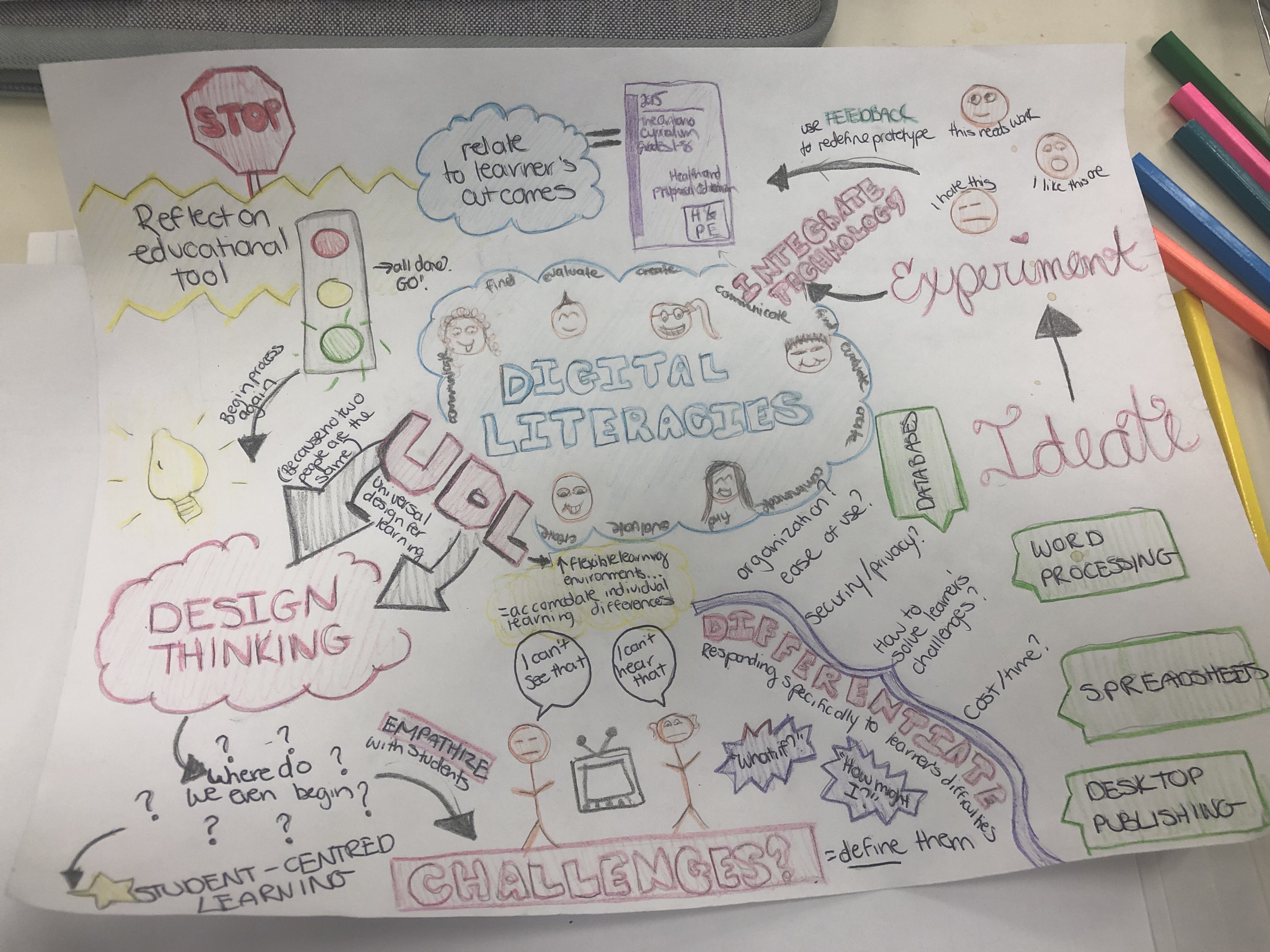
Every student we encounter as educators will have a wide variety of strengths and weaknesses when it comes to digital literacy. Digital literacy is the ability to use communication and information technologies to find, evaluate, create and communicate information. As we assess our teaching strategies, it’s extremely important to promote open education that includes Universal Design for Learning (UDL) as mentioned in the Technologist Module. We need to focus on integrating technological tools that can be used in a variety of ways to accommodate each student’s needs. Student-centred learning should be the basis of how we choose to teach the curriculum to attempt to reduce the barriers in our student’s education and address their strengths in the process. If we can create flexible learning environments we will be able to accommodate all individual learning differences. Where do we begin? Design thinking empowers people to develop new solutions to current problems. We need to analyze each student with empathy and begin to learn what these students need. What challenges are they experiencing that can be resolved with the use of technology? After we define the learner’s challenges, we must start identifying features of how technology can address these challenges and which technological tool could best be used to accommodate these issues. It’s important to consider the following questions while choosing a tool; how easy is it to use? Is it costly/ timely? Is there security/privacy settings? Etc. This is when differentiation instruction must be incorporated. This is when we address the needs of our learners and specifically address the concerns of each student. When a technological tool has been chosen, it needs to be experimented with our students. This will allow the students to see what works, what doesn’t and what improvements should be made. With the feedback of the students we are able to redefine the prototype that they experimented with. It’s important to explain how this tool connects to the learning outcomes of the curriculum.
I believe design thinking is very important to incorporate into our teaching practises. Most of us have all experienced the same teaching approaches; copying information from a power point, memorizing many week’s worth of material, then regurgitating it on paper and that’s how our intelligence is defined. We are not addressing the strengths of our students and giving them a fair opportunity to develop to their full potential. Our assignment of promoting an educational tool we were unfamiliar with, was an eye opener that followed the modified learning explained in this module. The assignment enlightened us of how we could use these new tools in the classroom to promote differentiated instruction. For example, Padlet can be used to help those who don’t necessarily enjoy speaking in front of a crowd, or those that are limited in expressing creativity. It’s so important that we address ALL intelligences and create a flexible learning environment for every student we teach.
